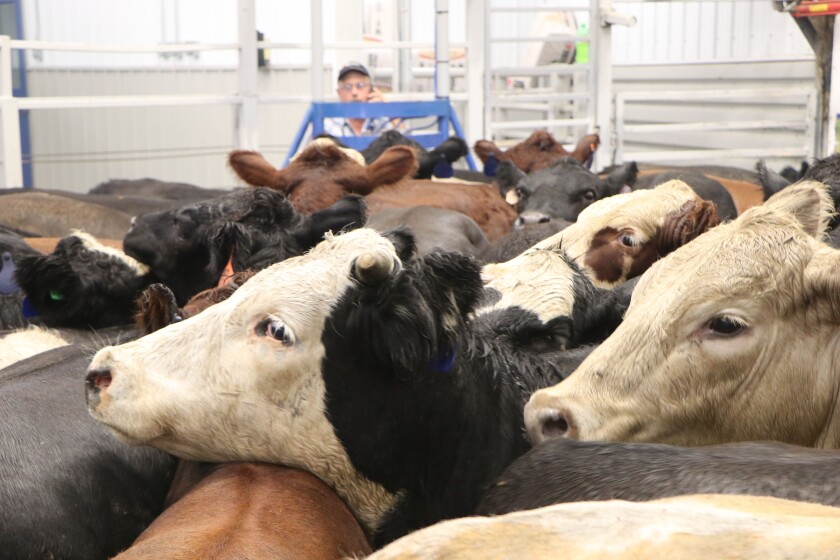Bagley Risk Management Solutions: Your Guard Versus Unpredictability
Bagley Risk Management Solutions: Your Guard Versus Unpredictability
Blog Article
Comprehending Livestock Danger Defense (LRP) Insurance Coverage: A Comprehensive Guide
Navigating the world of livestock threat security (LRP) insurance can be an intricate venture for several in the farming industry. This kind of insurance supplies a safety web against market fluctuations and unpredicted conditions that could affect animals producers. By comprehending the ins and outs of LRP insurance, manufacturers can make educated choices that may secure their procedures from financial dangers. From how LRP insurance works to the different insurance coverage options available, there is much to discover in this thorough guide that could possibly form the means livestock manufacturers come close to risk management in their services.

Exactly How LRP Insurance Coverage Functions
Occasionally, comprehending the auto mechanics of Animals Risk Protection (LRP) insurance coverage can be intricate, but damaging down just how it functions can give quality for herdsmans and farmers. LRP insurance coverage is a danger management device made to protect livestock manufacturers versus unanticipated price decreases. It's essential to keep in mind that LRP insurance is not an earnings guarantee; instead, it concentrates exclusively on price risk protection.
Qualification and Insurance Coverage Options

When it comes to insurance coverage choices, LRP insurance policy offers producers the flexibility to pick the coverage level, coverage duration, and endorsements that best match their risk management demands. By recognizing the eligibility criteria and protection choices readily available, animals manufacturers can make educated choices to manage danger properly.
Advantages And Disadvantages of LRP Insurance
When examining Animals Danger Defense (LRP) insurance policy, it is crucial for livestock producers to weigh the drawbacks and advantages inherent in this risk monitoring device.

One of the primary advantages of LRP insurance is its capability to provide security against a decline in animals rates. Furthermore, LRP insurance policy offers a degree of adaptability, permitting producers to customize insurance coverage degrees and policy durations to suit their particular needs.
However, there are likewise some downsides to consider. One limitation of LRP insurance coverage is that it does not secure against all kinds of threats, such as condition episodes or all-natural catastrophes. Moreover, premiums can in some cases be expensive, especially for producers with large animals herds. It is critical for manufacturers to carefully analyze their individual threat direct exposure and monetary situation to determine if LRP insurance policy is the appropriate danger monitoring device for their operation.
Recognizing LRP Insurance Coverage Premiums

Tips for Making Best Use Of LRP Advantages
Making the most of the benefits of Animals Threat Defense (LRP) insurance calls for tactical planning and aggressive threat management - Bagley Risk Management. To make the many of your LRP protection, take into consideration the following ideas:
Routinely Examine Market Problems: Remain informed regarding market trends and cost variations in the animals market. By keeping an eye on these elements, you can make enlightened decisions regarding when to buy LRP insurance coverage to safeguard versus possible losses.
Establish Realistic Insurance Coverage Levels: When selecting coverage levels, consider your manufacturing costs, market value of livestock, and potential threats - Bagley Risk Management. Establishing practical insurance coverage degrees makes sure that you are adequately secured without paying home too much for unneeded insurance coverage
Diversify Your Coverage: Rather of depending solely on LRP insurance coverage, think about diversifying your threat monitoring techniques. Integrating LRP with various other danger management devices such as futures agreements or choices can provide thorough insurance coverage versus market unpredictabilities.
Evaluation and Readjust Insurance Coverage Regularly: As market conditions transform, occasionally assess your LRP insurance coverage to ensure it aligns with your existing danger direct exposure. Readjusting protection degrees and timing of purchases can aid optimize your danger defense method. By complying with these suggestions, you can take full advantage of the benefits of LRP insurance policy and guard your livestock procedure against unpredicted risks.
Final Thought
In conclusion, livestock threat protection (LRP) insurance coverage is a useful device for farmers to take care of the financial dangers connected with their livestock procedures. By recognizing exactly how LRP works, qualification and insurance coverage choices, in addition to the benefits and drawbacks of this insurance coverage, farmers can make informed decisions to secure their source of incomes. By carefully thinking about LRP costs and executing methods to make the most of advantages, farmers can minimize possible losses and ensure the sustainability of their operations.
Animals manufacturers interested in getting Animals Danger Protection (LRP) insurance coverage can discover a range of qualification requirements and insurance coverage choices tailored to their particular animals procedures.When it comes to coverage choices, LRP insurance supplies manufacturers the adaptability to pick the protection level, protection period, and recommendations that best fit their threat monitoring needs.To understand the complexities of Livestock Threat Defense (LRP) insurance totally, understanding the elements affecting LRP insurance coverage premiums is important. LRP insurance coverage premiums are established by various aspects, including the insurance coverage level picked, the expected rate of livestock at the end of the insurance coverage duration, why not look here the type of livestock being guaranteed, and the length of the insurance coverage duration.Evaluation and Readjust Insurance Coverage Regularly: As market problems alter, periodically examine your LRP protection to guarantee it straightens with your current threat exposure.
Report this page